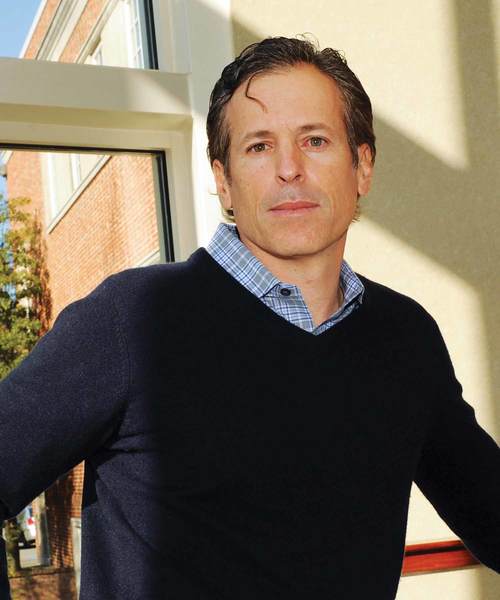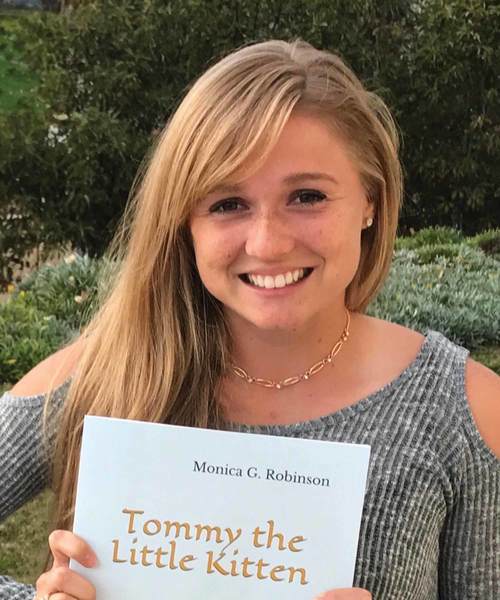
David DiLuca
A change in priorities
University of Notre Dame men’s tennis head coach Bobby Bayliss nervously eyed his watch as he approached the U.S. Airways arrivals gate at Louisville International Airport.
It was a foggy Thursday morning in February 1992 and in just two hours his 10th-ranked Irish squad was slated to face fifth-ranked Florida in what was sure to be the team’s biggest test of the season to date.
There was just one problem. His No. 1 singles player, David DiLucia, was nowhere to be found.
The plan had seemed simple enough just a few days earlier. DiLucia had earned a wild card into the draw of the prestigious U.S. Indoors—a professional event in his hometown of Philadelphia. He would face a formidable challenge in 1985 Wimbledon finalist Kevin Curran during a first-round matchup Tuesday.
DiLucia was not expected to take a set and would join the team Wednesday. But then something unexpected happened.
The Notre Dame senior beat the Wimbledon finalist.
So DiLucia moved on to round two Wednesday against an up-and-coming Pete Sampras, who’d won the U.S. Open in 1990. DiLucia ultimately fell in a hard-fought match to Sampras, and phoned Bayliss around midnight to report that his flight the next morning was scheduled to get in to Louisville at 12:30 p.m. The Notre Dame match started at 2 p.m.
So when an anxious Bayliss pulled up to the gate that afternoon, it was with great relief that he spotted DiLucia and quickly left with his star pupil in tow.
They hurried into the hotel lobby as Notre Dame’s opponent was exiting the elevator bay. Florida didn’t think DiLucia had made it in time, and the players were sporting a series of relieved grins.
But DiLucia did make it, and upon catching a glimpse of the best college player in the country, the once confident gaggle of Gators turned an Irish shade of green.
“The look on their faces said it all,” Bayliss says, some 20 years later. “They were all strutting to their van and their faces just dropped. The match was over right there.”
Notre Dame won the matchup, 6-0. The doubles points were not contested.
It’s one of Bayliss’ favorite stories to tell, and the result showcases what DiLucia has meant to his teammates, friends and students over the course of his 30-year tennis career.
He is, and always will be, a game-changer.
A dominating force on the court while at Notre Dame, DiLucia has since moved on to a life of coaching, where he’s combined his knowledge of the game with an elite curriculum of character-based lessons to develop into one of the top tennis mentors in the country.
Over the course of his career, he’s worked with an A-list group of USTA juniors, as well as legendary tennis professionals including Lindsay Davenport and the Bryan brothers. Now, as the leader of a junior tennis academy and a director with the character development organization, CITRS, he is motivating the next generation of promising American tennis players, from a variety of socioeconomic backgrounds, to learn the game the right way.
Bayliss often says walking into a room with DiLucia is like “showing up with a 250-pound Marine,” and his work with young tennis hopefuls is a sterling example.
DiLucia draws attention, keeps it and shapes it to turn boys who play tennis into men who use the sport to positively impact their lives both on and off the court.
“Our mission statement at CITRS centers on helping students achieve successful lives through character education,” DiLucia says. “Tennis is a great medium to teach those skills. Typically, how you deal with things on the court like bad line calls, not feeling well and struggling with your emotions is how you’ll deal with things off of it.”
DiLucia preaches the values of trust, respect, integrity and accountability with his students, and his breadth of knowledge in those areas comes as no surprise.
They’re all part of the critical life lessons he learned under the tutelage of Bayliss.
A highly touted recruit out of Norristown, Pa., DiLucia surprised the tennis world in 1988 by not following some of his contemporaries into the professional ranks. Instead, he chose to compete and grow at the collegiate level and earn his degree.
DiLucia certainly turned heads when he committed to Notre Dame, and by doing so, he put a high degree of trust in what Bayliss had promised—that he would schedule the best teams in the country and surround DiLucia with a talented group of players to turn the Fighting Irish program into a winner.
He attained a top-10 national ranking in singles as a junior, and by his senior year he was ranked No. 1 and the team had achieved unprecedented program success, culminating with a berth in the NCAA Championship title match.
Bayliss had held true on his promise of building a winning program, and DiLucia had epitomized his game-changing ability. He still holds the school record for combined singles and doubles wins at Notre Dame with 219.
After graduating in 1992, DiLucia moved on to a seven-year pro career where he peaked at No. 92 in doubles and No. 248 in singles. But professional tennis was never DiLucia’s be-all, end-all like it was for other players, and he had the Notre Dame degree to prove it.
He retired in 1999 and tried his hand at mentoring other touring professionals. He served as a traveling coach for a series of world No. 1 players, including Davenport, Bob and Mike Bryan and Lisa Raymond. But throughout his professional coaching stint, DiLucia found his mind returning fondly to his volunteer work on tour as a professional, visiting with young competitors at youth clinics across the country and teaching the lessons learned from Bayliss to the future stars of the game.
“I wanted to give kids a piece of information, in a simple way, to help them understand the importance of character in tennis,” DiLucia says.
He contacted longtime friend and coach Rodney Harmon, the director of men’s tennis at the USTA, who had seen DiLucia’s teaching firsthand. Harmon hired him as a USTA National Coach, and DiLucia went to work with a group of promising pre-teens at the organization’s training center in Florida.
As a teacher, DiLucia made it clear that on-court performance does not define a tennis player. When traveling through Europe and the United States with his juniors, he would spend countless hours with the players, discussing their goals and dreams over meals while pushing them to think critically about the value of listening, respecting their teammates and working together as a unit.
Former USTA junior Chase Buchanan was part of DiLucia’s first student group, and credits much of his personal development to his mentor’s unique teaching style.
“Dave wanted me to develop as a person morally and understand life, not just tennis,” Buchanan says. “A lot of coaches are just concerned about wins and losses, but not Dave. It was a bigger deal to him that you learned from your experiences and grew because of them.
“At times in my life, I’ve felt burnt out by tennis, but I don’t know if I’ve ever felt that way with David. Things just click with him.”
DiLucia continued to develop his character-based curriculum during his seven years with the USTA juniors program, before moving on to his current work with CITRS in 2010.
“We didn’t want to just be a content program—we wanted to be a hands-on group that would go in, talk to teachers and students, see their needs and then craft a curriculum,” DiLucia says. “The biggest difference with CITRS is that we go deeper—we get to the heart of the matter.”
He and his fellow CITRS instructors work closely with Legacy Youth Tennis and Education (formerly Arthur Ashe Youth Tennis) in Philadelphia, the New York Junior Tennis & Learning (NYJTL) organization and other schools and community programs that allow children from low-income families to learn the game at no cost, during those critical after-school hours where inner-city children can be influenced by their surroundings.
Whether it’s with these types of children, or with the tennis prodigies he instructs at his popular junior academy, Tennis Addiction, DiLucia’s goals remain the same.
Says DiLucia, “Getting those kids talking about their goals and understanding virtues is huge, because it creates a bottom-up philosophy and culture. They start mentoring younger kids and from there, the wheels keep on turning.”
It’s been 20 years since DiLucia got off that plane in Louisville, but whether it was with the Florida Gators in 1992 or a group of teenagers from North Philadelphia in 2012, his ability to influence those around him—to become that game-changer—continues to define and shape his purpose as a teacher and as a leader.
“Life can be confusing if you’re not at peace with yourself,” DiLucia says. “I often ask my students if they’d rather be successful or significant. For me, to hear guys in their 20s talk about how they’ve benefited from the lessons we discussed during their childhood, it’s truly been a gratifying experience.”

